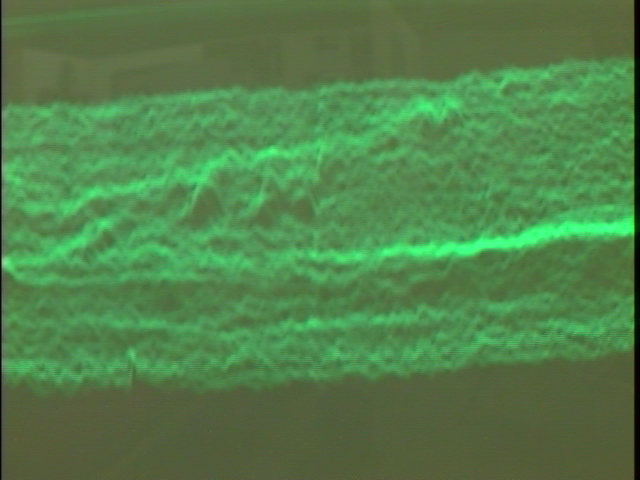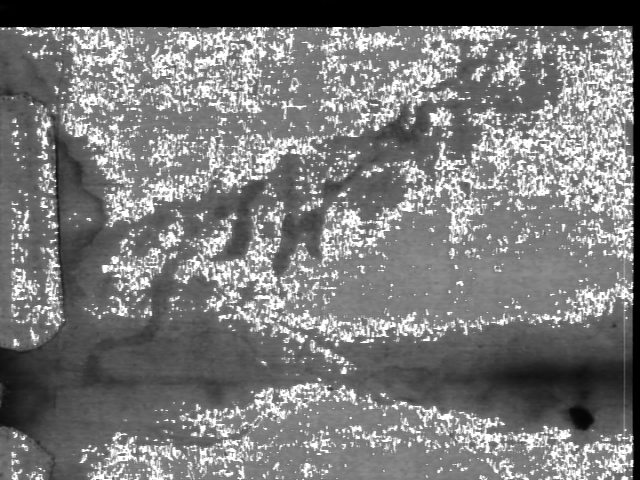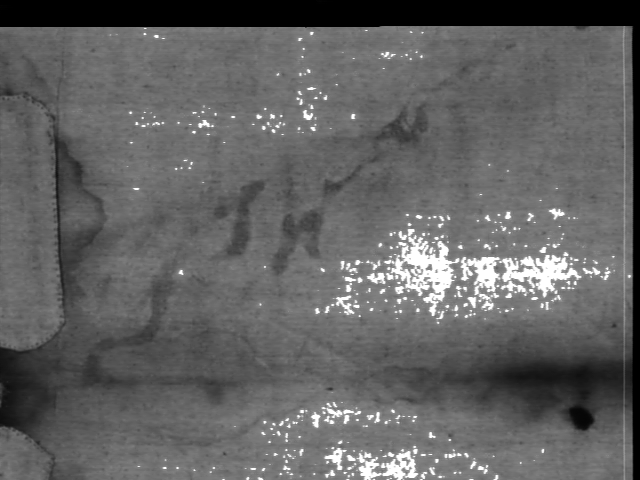In May of 2012 Dr. Petrus Soons and Pete Schumacher did an investigation to see if Alan Whanger was right when he stated that he found “proof” that on the left arm of the Man on the Shroud there were indications that He had a phylactery bound on the left arm and also a phylactery on the front of the head.
Remembering God’s command to the Hebrews in Deuteronomy 6:8, to “bind them
(God’s words) as a sign on your hand, fix them as an emblem on your forehead”, we (the Whangers) wondered whether the box found between the eyes might be a head phylactery.
The Hebrew word for phylactery is tefillin. Each tefillin contains tiny parchments on which Scripture verses are written. There are head phylacteries and arm phylacteries. A head phylactery is known as SHEL ROSH and has four Scripture compartments. The Whangers tell in their book: “A curious finding on the Shroud which also may be seen on many of the early icons is, what looks rather like a three-sided box (the top side is missing) above the nose, just above eyebrow level. There is a V-shaped image extending from the base of the box down over the bridge of the nose They concluded that that could be the image of a head phylactery.
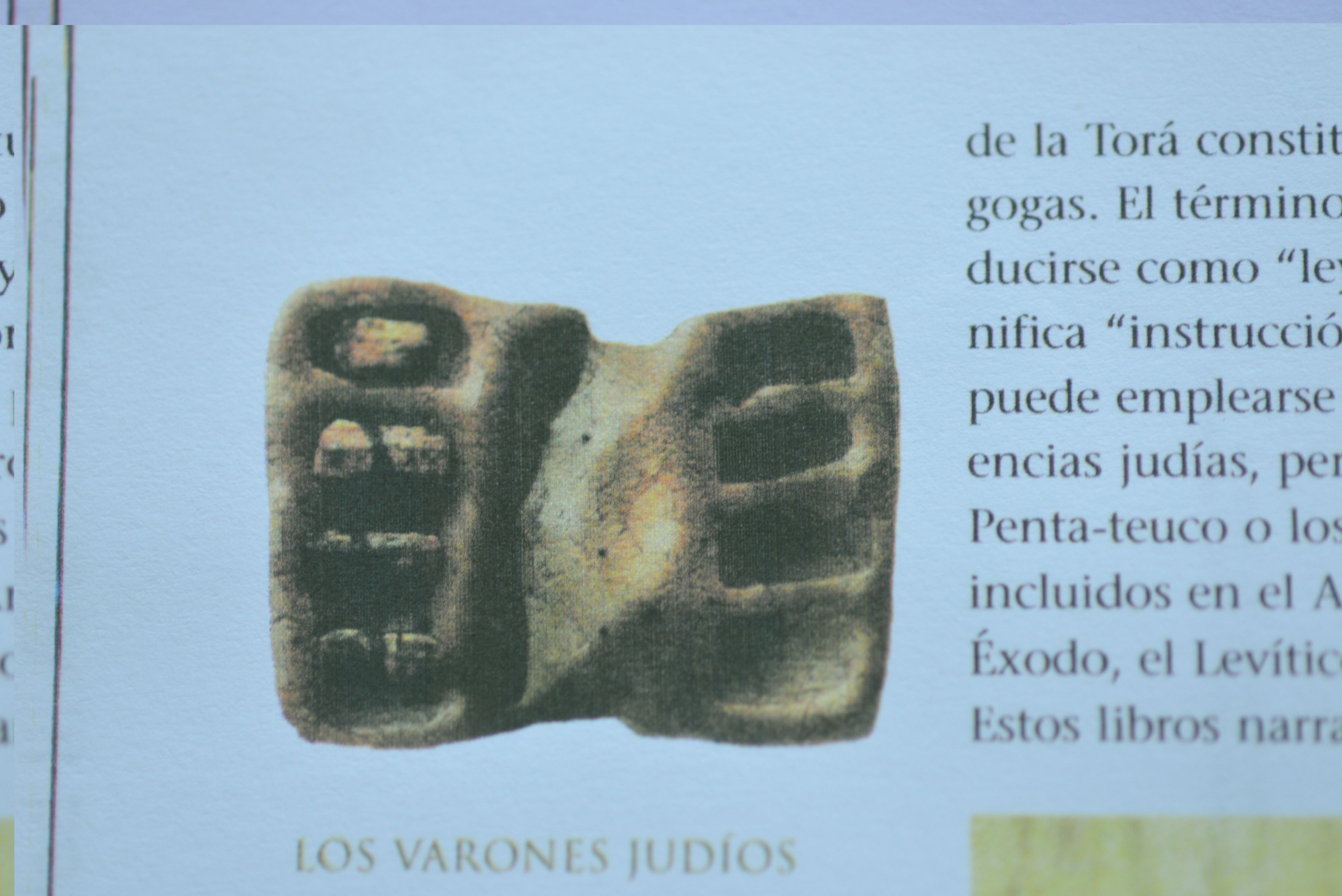
Image Phylactery 2: Shell Rosh, head phylactery
An arm phylactery is known as SHEL YAD and has one Scripture compartment. Each compartment held a prescribed Scripture, each different from the others, carefully hand lettered on tiny parchment, and then carefully folded and stitched in place. Every phylactery was highly venerated, and extreme care was taken that it be perfectly made and meticulously cared for according to strict religious regulations. Phylacteries were (and are still) worn on the head and on the non-dominant arm by orthodox Jewish males during times of prayer. Their presence clearly identifies the wearer as a Jew since nobody else would ever wear one.
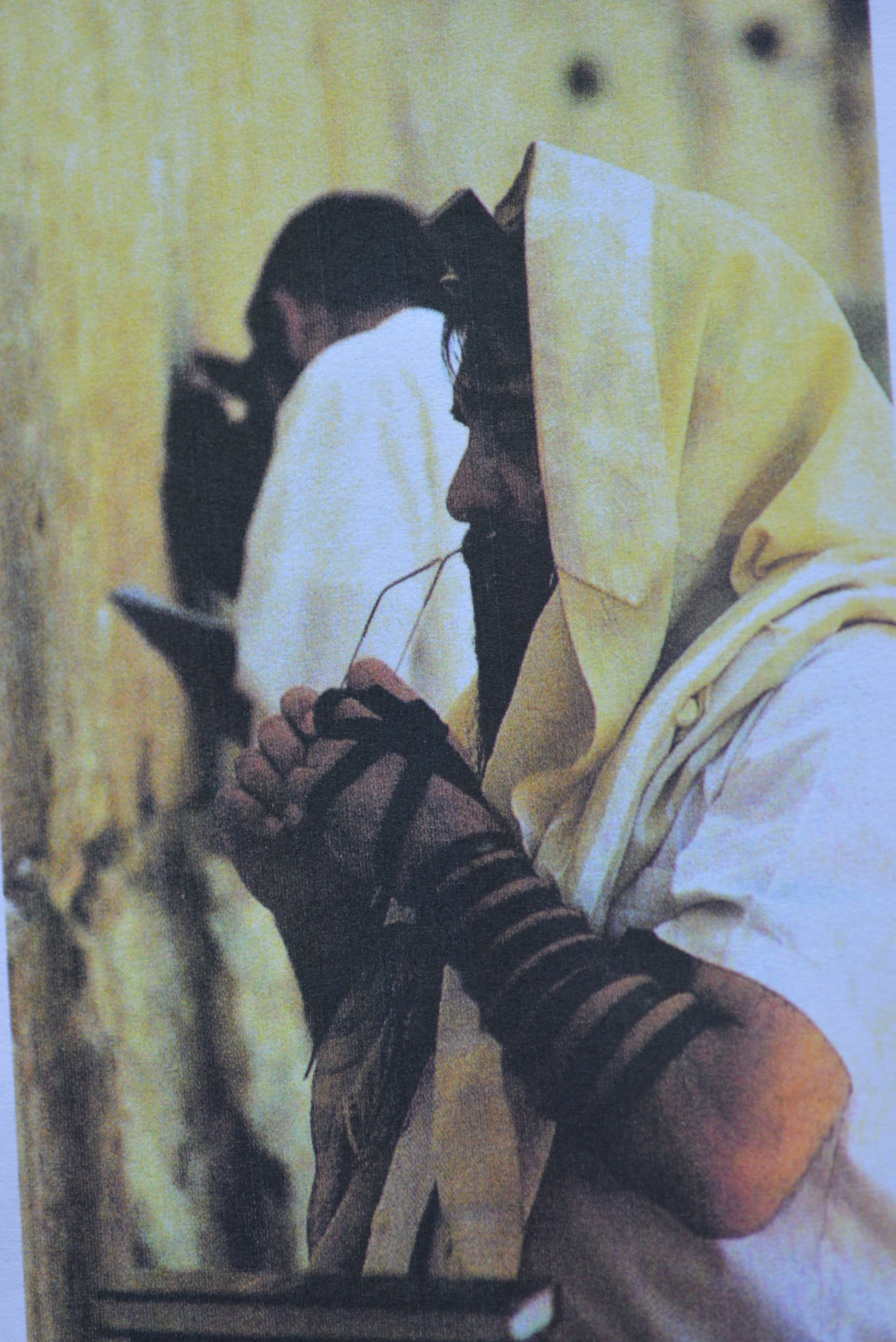
Image Phylactery 1: Shell Yad, arm phylactery
It certainly was not customary to bury a body with a phylactery on it. Indeed, any contact of a phylactery with a corpse was unthinkable, for this would have made it ritually unclean. Of course, if a man was wearing a phylactery at the time of death, it would have been buried with the body, because according to Jewish custom, anything that was in contact with the body at the time of death, was buried with the body. Scripture makes no mention of a phylactery at the time of Jesus’ death and burial.
Concerning the arm phylactery, the blood flow on the two arms is different. On the left arm it is repeatedly interrupted diagonally, which might have been caused by the strap of an arm phylactery. An arm phylactery is held in place at elbow level by a loop of leather strap, and the strap then is wound around the arm seven times and secured by entwining around the hand and fingers with a ritual knot.
Since it was not customary to bury phylacteries with the dead, and since in this case the phylacteries were likely a most offensive means of mocking (by the Roman soldiers ??), why were they not removed before burial ? There are at east two reasons: it was customary to bury with the body anything that was in touch with the body at the time of death, and it was also customary to bury with the body anything that had the lifeblood on it.
So, this was the information that Pete Schumacher and Petrus Soons had to go on as described by The Whangers.
They checked the left arm with the VP-8 Image Analyzer (Level Slicing) and used different methods to check the left arm and could indeed find the 3D relief of the binding of what could have been the straps around this arm (See different photographs). The different blood flows are clearly visible with their interruptions. So, it is quite possible that Alan Whanger was right in his statements about the phylactery on the left arm. You can even count the seven “valleys” were the strip would have been present on the arm.
Image Phylacterie 3: VP8 Image Analyzer 3D relief interruption blood flow left arm
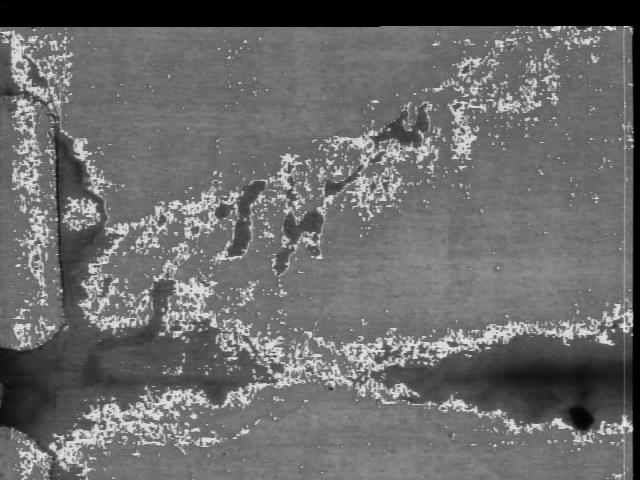
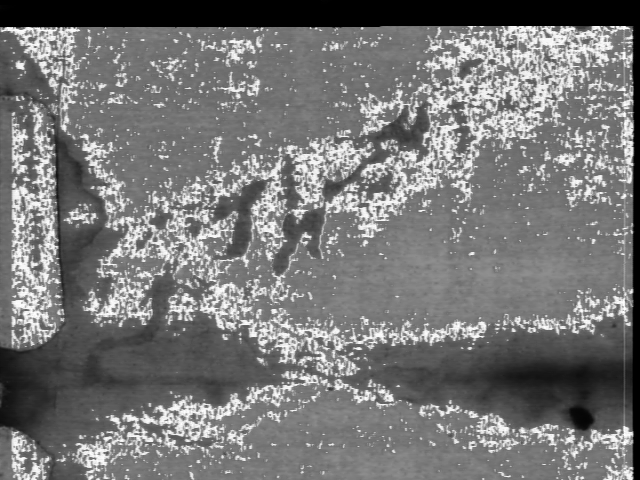
Image 4 Image 5
Image 6 Image 7
Level Slicing VP8, showing interruption in blood flow
There are also photographs of the Vignon Markings, showing the box between the eyebrows and an icon that shows this detail.
The photograph made during the research with the VP8 Image Analyzer shows a little vertical, square, relief on this indicated area.
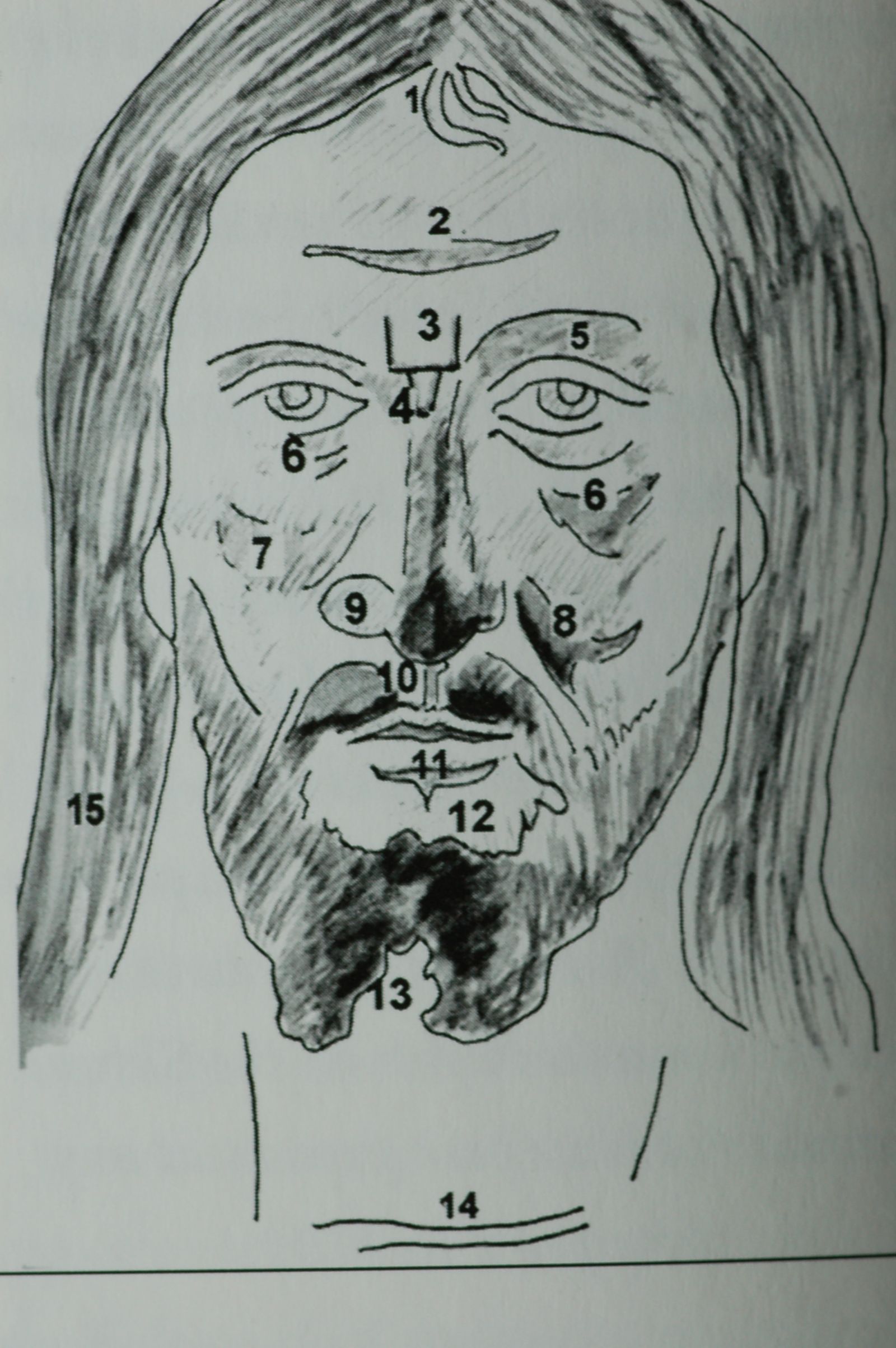
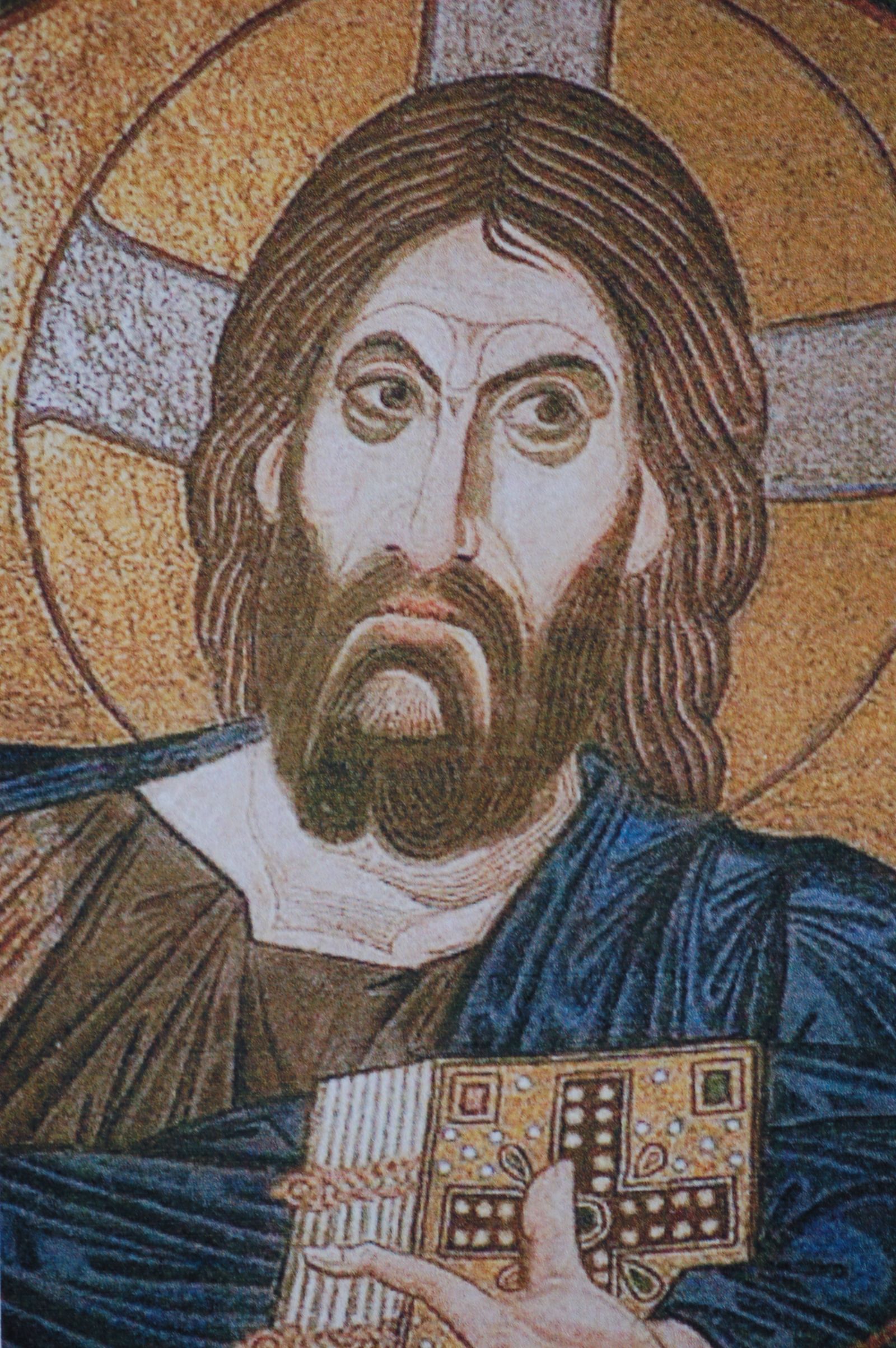
Photo 11: Vignon Markings N° 3 and 4 Photo 12: Icon Jesus with Markings 3 and 4
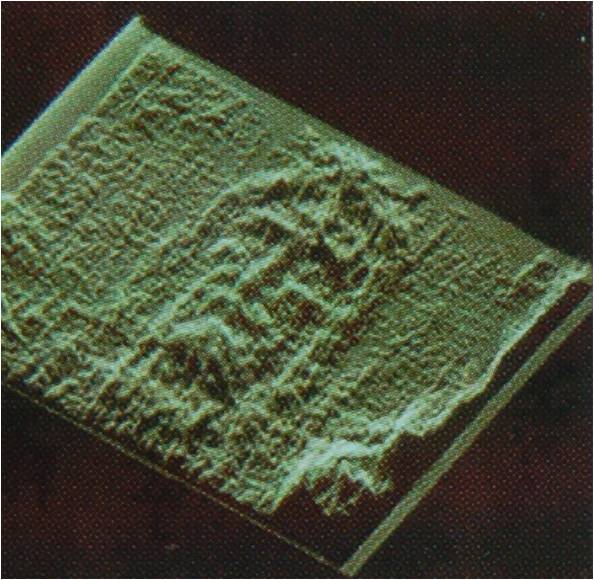
Photo 13: Image Head VP8 Image Analyzer square vertical relief above/between eyebrows
So, there are indications in the 3D investigations that there could possibly be these objects on the left arm and between the eyebrows, but, further research with more sophisticated 3D investigations in the future surely has to be done !!!!!

